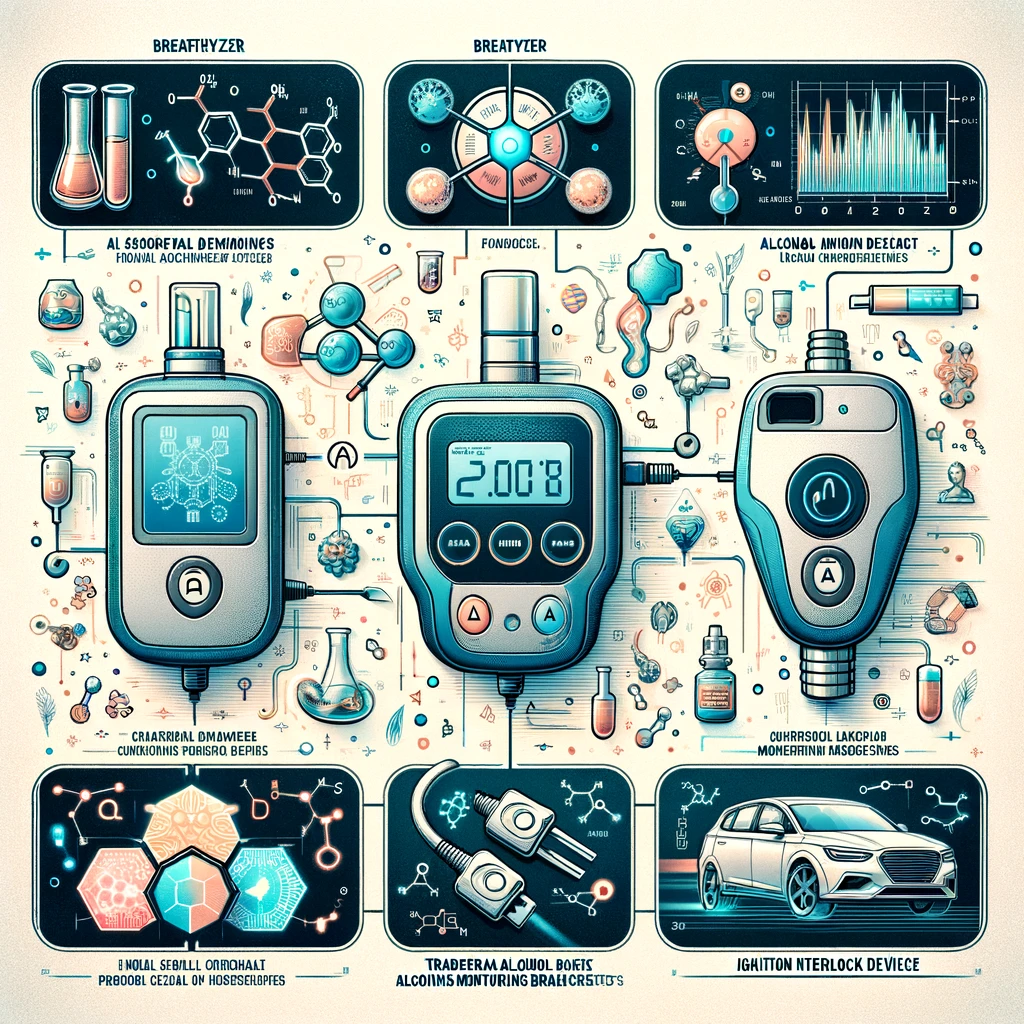
In recent years, alcohol monitoring technology has become an invaluable tool in both healthcare and legal systems. Devices designed for alcohol monitoring have evolved significantly, providing accurate, real-time data on an individual’s alcohol consumption. This blog post aims to delve into the technical aspects of how these devices function, their applications, and the science that enables them to offer such precise measurements.
The Basics of Alcohol Monitoring
Alcohol monitoring devices are employed in various settings, from law enforcement (e.g., monitoring DUI offenders) to personal health tracking. The most common types include breathalyzers, transdermal alcohol monitoring bracelets, and interlock ignition devices. Each type employs different methodologies to detect alcohol levels but ultimately serves the same purpose: to monitor and report alcohol consumption accurately.
Breathalyzers: Chemical Reaction-Based Detection
Breathalyzers are the most widely recognized form of alcohol monitoring. They work by analyzing a breath sample to determine the Blood Alcohol Concentration (BAC) level. The core technology behind breathalyzers is based on a chemical reaction involving alcohol that produces a change in color or electrical current, which can be measured and converted into a BAC reading.
- Chemical Sensor Breathalyzers: Use a chemical solution that changes color when it reacts with alcohol. The degree of color change is proportional to the alcohol concentration in the breath sample.
- Fuel Cell Sensor Breathalyzers: Alcohol in the breath is oxidized at an electrode, creating an electrical current proportional to the amount of alcohol.
Transdermal Alcohol Monitoring: Measuring Alcohol Through the Skin
Transdermal alcohol monitoring devices, such as the SCRAM (Secure Continuous Remote Alcohol Monitor) bracelet, measure alcohol as it is excreted through the skin. These devices use:
- Fuel Cell Technology: Similar to breathalyzers, but adapted to measure alcohol in perspiration.
- Continuous Monitoring: Unlike breathalyzers, transdermal devices provide continuous, passive monitoring, making it harder for the wearer to bypass the system.
Ignition Interlock Devices: Preventing Operation Under Influence
Ignition interlock devices require the driver to pass a breathalyzer test before the vehicle can start. These devices are often mandated by courts for DUI offenders and use fuel cell technology to ensure accuracy and reliability.
Technical Challenges and Solutions
While alcohol monitoring technologies are highly effective, they are not without challenges, including environmental factors, calibration requirements, and the potential for tampering. Modern devices incorporate sophisticated algorithms, tamper detection mechanisms, and calibration checks to mitigate these issues and ensure reliable operation.
The Impact of Alcohol Monitoring Technology
The applications of alcohol monitoring technology extend beyond law enforcement. In healthcare, these devices can support addiction treatment programs by providing objective data on consumption patterns. For individuals, wearable technology integrating alcohol monitoring offers a way to understand and manage personal consumption habits better.
The Future of Alcohol Monitoring
As technology advances, we can expect alcohol monitoring devices to become even more integrated into our lives, potentially connecting with smartphones and other wearable devices to provide real-time feedback and support for individuals looking to moderate their alcohol intake.
Citations:
- National Institute on Alcohol Abuse and Alcoholism. (2020). Alcohol Monitoring Technologies: Applications to Promote Health and Recovery. https://www.niaaa.nih.gov.
- Laposata, M. (2006). Alcohol and its Biomarkers: Clinical Aspects and Laboratory Determination. Clinical Biochemistry Reviews.
This exploration into the workings of alcohol monitoring technologies reveals a sophisticated interplay between chemistry, electronics, and software engineering. These devices not only offer critical support in legal and healthcare settings but also open up new possibilities for personal health management. As we continue to innovate, the potential for these technologies to contribute positively to society remains vast.

